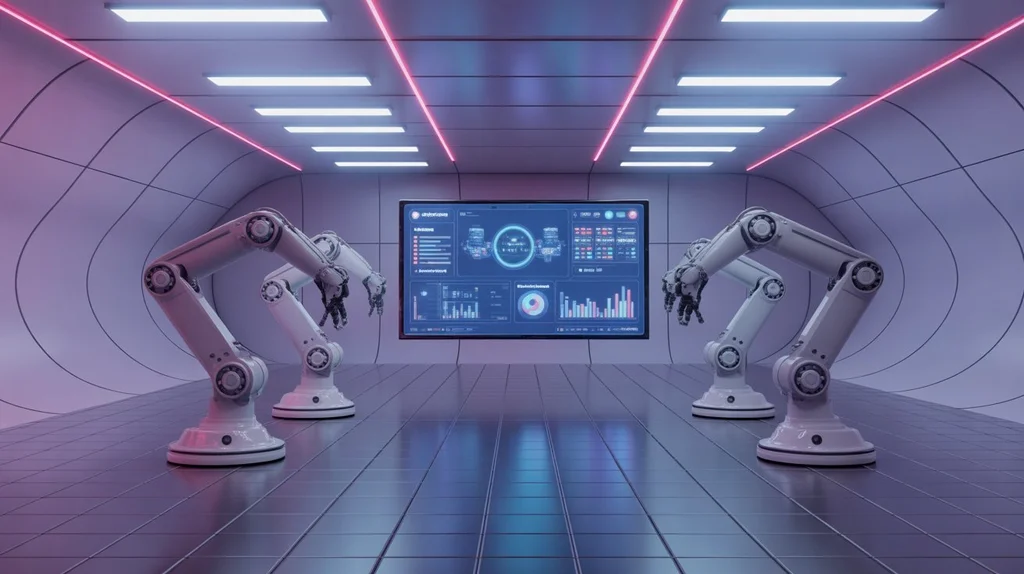HIGH BRAND
Your trusted source for tech reviews and technologies.
Introduction: Why Automation Is the Future of Business
In today’s fast-paced digital economy, automation tools are no longer optional—they are a strategic necessity. From simple machines to AI-driven platforms, automation has evolved into a key driver of efficiency, innovation, and competitive advantage. Businesses across industries are now leveraging automation to reduce costs, improve accuracy, and enhance customer experiences.
In this guide, we’ll explore:
-
The core components of modern automation tools.
-
How automation works step by step.
-
The different types of automation (RPA, AI, Workflow Automation, etc.).
-
The latest trends shaping the future of automation.
-
Case studies from finance, healthcare, manufacturing, and e-commerce.
-
The benefits, challenges, and best practices for successful implementation.
What Are Automation Tools in Business?
Business automation refers to using technology to execute tasks, processes, or decisions with minimal human intervention. Modern automation tools include:Task Automation – handling repetitive activities.Process Automation (RPA, BPA) – managing workflows end-to-end.Decision Automation (AI/ML) – using artificial intelligence to make smart business choices.
Key Components of Modern Automation Tools
1. User Interfaces & Platforms
-
Low-Code/No-Code Platforms: enable non-technical employees to design workflows.
-
Drag-and-Drop Builders: simplify process design.
-
Centralized Dashboards: provide full visibility and monitoring.
2. Automation Engines
-
Interpret instructions and execute tasks.
-
Manage process states and scheduling.
3. Interaction Capabilities
-
RPA Bots: mimic human interactions with UIs.
-
APIs: integrate directly with databases and applications.
-
Intelligent Document Processing (IDP): extract insights from documents using AI.
4. AI & Machine Learning
-
Natural language processing, computer vision, prediction, and self-optimization.
5. Data & Analytics
-
Real-time insights, performance tracking, and continuous improvement.
6. Monitoring & Security
-
Exception handling, scalability, and cybersecurity.
How Do Automation Tools Work?
-
Design & Configuration – identify processes, map workflows, configure bots, and set up integrations.
-
Execution – trigger actions manually, on schedule, or by events; bots interact via UI or APIs.
-
Monitoring & Management – track KPIs, detect errors, and intervene when needed.
-
Continuous Improvement – optimize workflows, retrain AI models, and gather feedback.
Types of Automation Tools
-
Robotic Process Automation (RPA): Ideal for repetitive, rule-based back-office tasks.
-
Workflow Automation (BPM Suites): Manage complex, multi-step workflows across teams.
-
Cognitive Automation (AI-powered): Use AI for decision-making, data extraction, and predictions.
-
IT Process Automation (ITPA): Manage infrastructure, servers, and deployments.
-
Marketing Automation: Personalize campaigns across email, social media, and websites.
-
Test Automation: Ensure faster, error-free software testing.
Latest Trends in Automation
-
Hyperautomation: Combining RPA, AI, BPM, and IDP for enterprise-wide automation.
-
AI-Driven Automation: AI as the decision-making core.
-
Cloud & Hybrid Automation: SaaS platforms for scalable automation.
-
Low-Code/No-Code Solutions: Empowering non-developers to build automations.
-
Automated Analytics: AI-generated insights and reports.
-
Integration-as-a-Service (iPaaS): Seamless connectivity across modern and legacy systems.
Business Benefits of Automation
-
Higher Efficiency & Productivity – 24/7 operation with fewer errors.
-
Improved Accuracy & Quality – consistent, rule-based execution.
-
Reduced Costs – savings on labor and rework.
-
Better Customer & Employee Experience – faster responses, less repetitive work.
-
Compliance & Risk Management – automated audit trails and early anomaly detection.
-
Scalability & Flexibility – handle growing workloads seamlessly.
-
Data-Driven Decisions – actionable insights from real-time analytics.
Challenges and Best Practices
Common Challenges
-
Automating the wrong processes.
-
Employee resistance to change.
-
Poor data quality.
-
Integration complexity.
-
Cybersecurity risks.
-
Skills gap in automation.
Best Practices
-
Start small with quick wins.
-
Engage stakeholders early.
-
Focus on data quality.
-
Design for scalability and security.
-
Build a culture of continuous improvement.
-
Invest in employee upskilling.
Case Studies: Automation in Action
-
Finance: Loan processing reduced by 70% using RPA + AI.
-
Healthcare: NLP chatbots and RPA improved scheduling and claims.
-
Manufacturing: Predictive maintenance with IoT and AI reduced downtime.
-
E-commerce: Automated returns process improved customer satisfaction.
The Future of Automation
-
Generative AI: Automating content creation and workflow design.
-
Adaptive & Autonomous Automation: Systems that learn and optimize with minimal input.
-
AR/VR Integration: Training, simulations, and guided processes.
-
Supply Chain Automation: End-to-end visibility with AI, IoT, and blockchain.
-
Ethics & Governance: Ensuring fairness, transparency, and workforce reskilling.
-
Automation-as-a-Service (AaaS): Subscription-based access to automation capabilities.
Conclusion
Modern automation tools are transforming businesses by combining user-friendly platforms, powerful execution engines, AI-driven intelligence, and continuous optimization. Companies that strategically adopt automation achieve unmatched efficiency, scalability, and innovation.
The next decade will see automation evolve into adaptive, AI-powered, and autonomous systems, making it vital for organizations to understand these tools and act proactively. Businesses that invest in automation today will lead the competitive landscape of tomorrow.
Automation Tools, Business Automation, RPA, AI in Business, Workflow Automation, Hyperautomation, Low-Code Automation,

